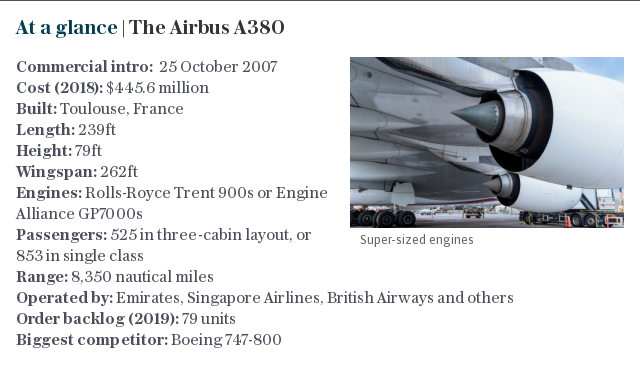A love letter to the A380: why passengers will miss the super-jumbo the most

Analysing the drawn-out, billion-dollar airline negotiation breakdowns that led Airbus to abruptly end its A380 program only 11 years after it begun is a complex business, with an ultimately sad conclusion.
Blame the 2008 financial crisis; the succession of cancelled orders; the advent of better building materials elsewhere; and an industry-wide shift in focus towards smaller, more fuel-efficient models and new, shorter flight routes. Many factors contributed to the A380 never realising its potential, but forget the manufacturers, it is the passengers who will miss this super-jumbo the most.
Like the supersonic Concorde before it, the A380 had a dare-to-dream attitude that made flying better. It was big and quasi-ugly, but comfortable and smooth-riding. In many ways, it was just too good for its own sake.
I'll never forget the first time I flew in one, stationed in economy and overlooking the wing. It was so quiet and graceful when it reversed onto the runway that I hardly felt it take off and it later proved to be one of the gentlest flights I’ve ever experienced.
The seats were agreeable, the bathrooms were spacious and there was a palpable excitement among my fellow passengers about the double-decker novelty of it all. Its 615-person capacity made the ticket prices reasonable, too. It was truly the best of both worlds.

In economy, five-star airlines including Singapore Air offered seats with a whopping 18-inch width and 34-inch pitch. To put that into perspective, very few carriers currently sell seats in premium economy with much better dimensions. The entertainment systems were impressive as well. Emirates installed what were at the time the largest screens ever to grace the economy cabin, at 13.3 inches in size.
Let’s move up to the front of the plane, where the A380 reintroduced the sort of scenes that hark back to the golden age of flying - well-dressed passengers toasting at the bar and smiles all round.
I enjoyed this privilege aboard Qatar Airways on one occasion after bagging a business class “error fare”, on the upper deck of their A380 quaffing Cuvée Louise 2004 at the spacious cocktail bar with my in-laws. I’ll always remember, on an Emirates A380 flight, opening the door to my private first class suite and taking a fully-fledged shower at 37,000 feet.

Singapore Airlines’ first class A380 suites boast no less than 50 feet of square footage. Etihad’s “Residence” incarnation comprises of a bedroom, living room and separate bathroom. Not many people on earth are able (or willing) to drop this amount of cash on a single flight, granted, but for those precious few, bidding this flying palace of a plane farewell will be a sorry affair.
Meanwhile, the likes of Ryanair ponder the idea of bicycle-style, semi-standing seats to cram even more rows into what are already woefully cramped cabins. "A plane is just a b****** bus with wings", the Irish airline’s CEO Michael O’Leary once said of the concept, cheerfully referring to the proposed seats as “bar stools with seat belts".
The A380’s retirement clock has officially started to tick, yes, but the good news is that we’ve still got a long time before they disappear completely. Back orders are still being filled, and will be until 2021. And if airlines are good for one thing, it's getting their money's worth.
British Airways, Qantas, Air France, Asiana, ANA, China Southern, Emirates, Etihad, Korean, Lufthansa, Malaysia, Qatar, Singapore and Thai will all be flying these behemoths for years to come.
Let’s enjoy it while it lasts. Super jumbo, we salute you.

Gilbert Ott is the man behind travel website God Save The Points.


